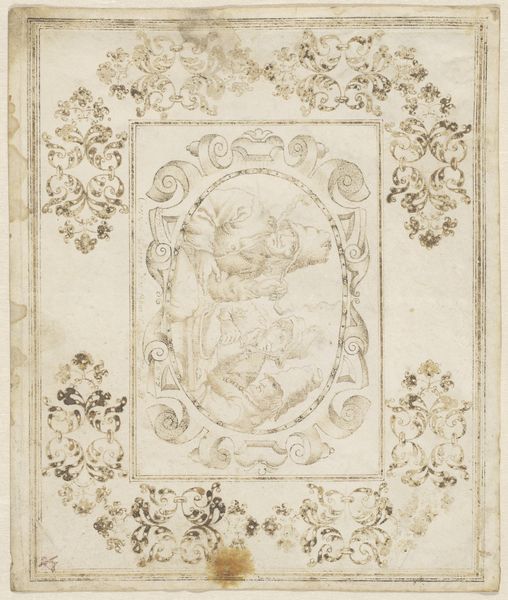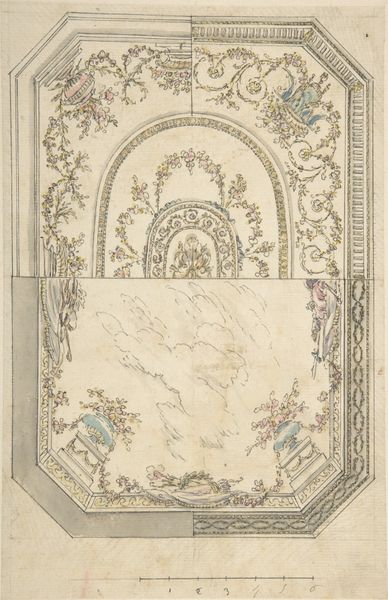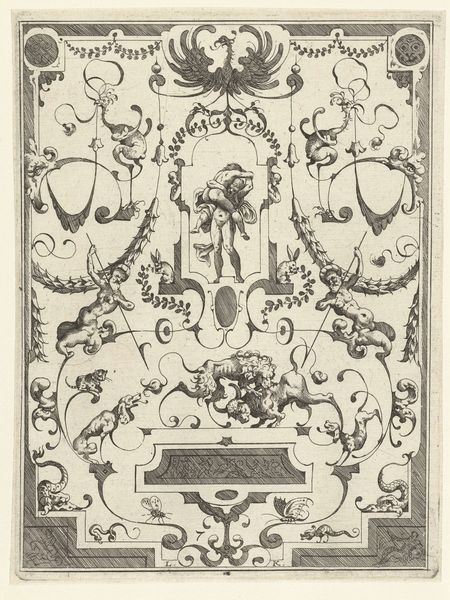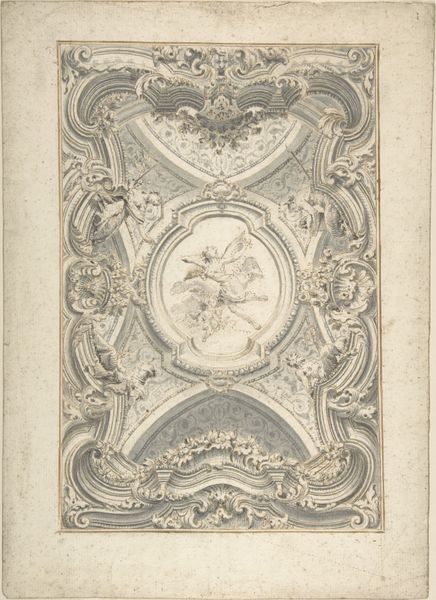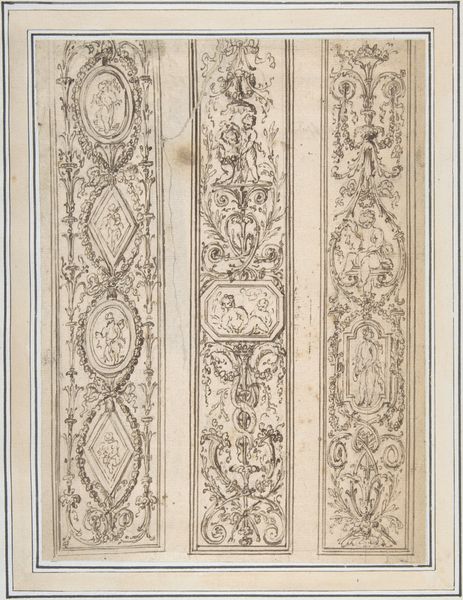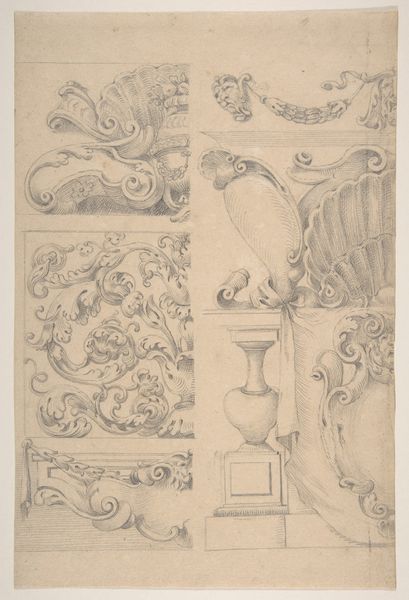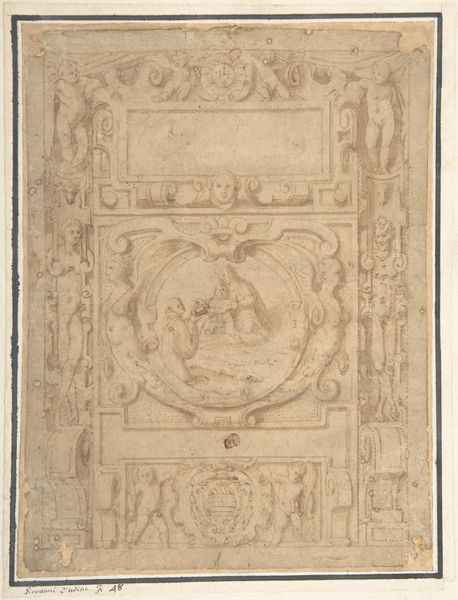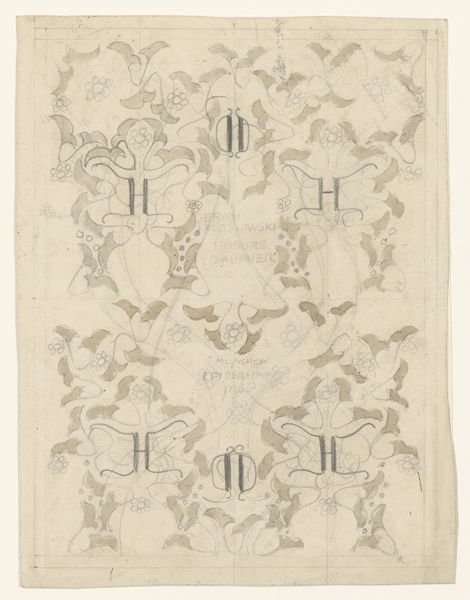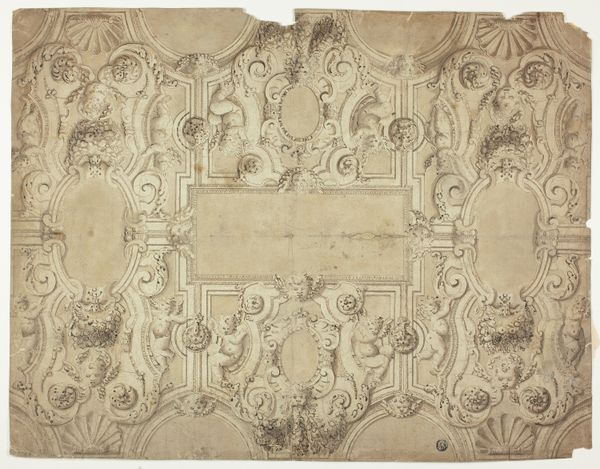
Design for a Decorated Wall and Ceiling of a Gallery, marked with the monogram of the French King Henri III or IV 1575 - 1585
0:00
0:00
drawing, print, paper, ink, pencil, engraving
#
drawing
#
allegory
# print
#
light earthy tone
#
landscape
#
mannerism
#
paper
#
11_renaissance
#
ink
#
earthy tone
#
geometric
#
pencil
#
history-painting
#
decorative-art
#
engraving
Dimensions: Sheet: 14 1/8 × 9 3/4 in. (35.9 × 24.8 cm)
Copyright: Public Domain
Curator: My initial thought is that this design just breathes “grandeur”! The intricate patterns… it feels like stepping back into a time of opulent royal courts, no? Editor: Exactly! What we're looking at is "Design for a Decorated Wall and Ceiling of a Gallery, marked with the monogram of the French King Henri III or IV." It's believed to be the work of Toussaint Dubreuil from sometime between 1575 and 1585. Currently, it resides at the Metropolitan Museum of Art. You immediately sense that decorative vibe, and I'd venture that that impression comes from the convergence of drawing, print and engraving using pencil and ink on paper. Curator: Oh, "decorative" is certainly one word for it! Look at the sheer volume of ornamental details vying for your attention – putti, landscapes, geometric shapes! It makes me think that living in a room like this must have felt like existing inside someone else's elaborate, waking dream. Editor: Precisely! Observe how Dubreuil uses the monogram as a kind of architectural linchpin. Everything seems oriented around it and is symmetrically balanced, thus embodying that era's obsession with order, though without losing dynamism. Notice, too, how those landscape vignettes provide spatial contrast. It plays cleverly with pictorial space. Curator: Well, I definitely see it as being quite evocative! It's more than just decoration; it's a visual statement. Imagine the conversations, the intrigues that could have unfolded beneath a ceiling like this… I find it quite thought provoking in its way. Editor: I think the artist, here, has captured the essence of a time. By engaging with this composition and material handling, he challenges the traditional artistic canon, all the while hinting towards Mannerism. The work is not merely an object of beauty; it is an encapsulation of intellectual and political ideologies. Curator: I will carry away that its impact goes far beyond the immediately ornamental, the emotional resonance somehow exceeds all the strictures. I suppose that’s Mannerism! Editor: For me it's a deep meditation on a lost set of principles and values that formed early modern sensibilities—a glimpse into the foundations of our civilization. Thank you for joining me.
Comments
No comments
Be the first to comment and join the conversation on the ultimate creative platform.

